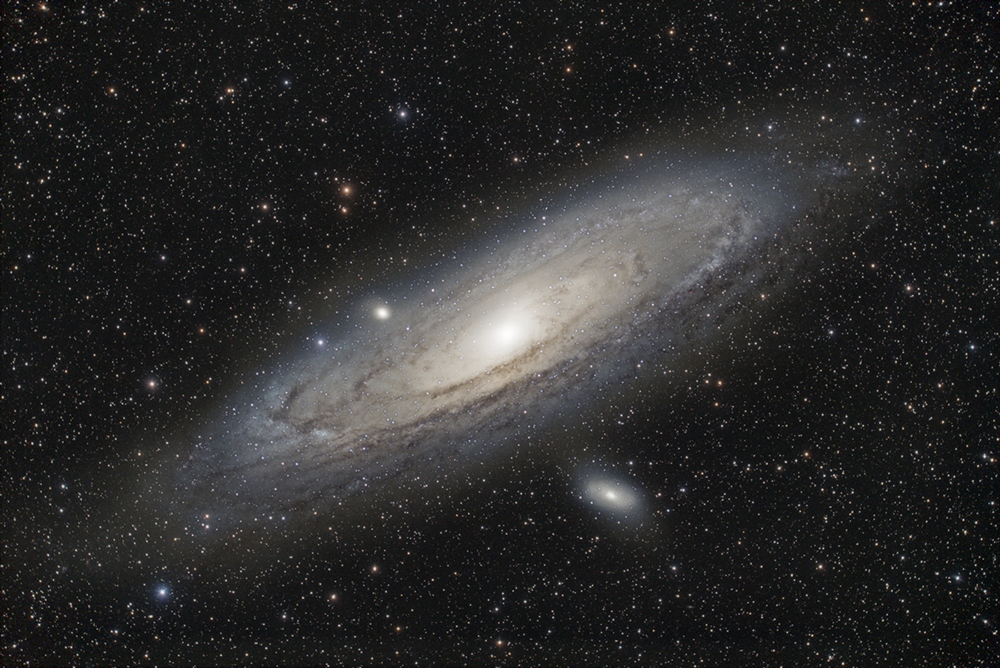
|
From Wikipedia, the free encyclopedia "The Andromeda Galaxy, also known as Messier 31, M31, or NGC 224, is a spiral galaxy approximately 2.5 million light-years from Earth, and the nearest major galaxy to the Milky Way. Its name stems from the area of the sky in which it appears, the constellation of Andromeda. While earlier findings suggested that the Milky Way galaxy contained more dark matter than Andromeda, and that it could be the largest in the Local Group, the 2006 observations by the Spitzer Space Telescope led to the revelation that the Andromeda galaxy contains approximately one trillion stars, at least twice the number of the Milky Way’s estimated 200-400 billion stars. It is also now evident that Andromeda, spanning approximately 220,000 light years, is the largest galaxy in our Local Group, which is also home to the Triangulum Galaxy and other minor galaxies. The mass of the Andromeda Galaxy is estimated to be 1.5×1012 solar masses, whereas the Milky Way's mass is estimated to be 8.5×1011 solar masses. The Milky Way and Andromeda galaxies are expected to collide in ~4.5 billion years, merging to form a giant elliptical galaxy or a large disc galaxy. With an apparent magnitude of 3.4, the Andromeda Galaxy is among the brightest of the Messier objects - making it visible to the naked eye on moonless nights, even when viewed from areas with moderate light pollution."
|
 |
| Click on Image for Larger Resolution |
|
Date : December 2017 Equipment used :
Exposure Detail : 20 exposures of 240sec Total hours 1.3 |
This Web Page was Built with PageBreeze Free HTML Editor